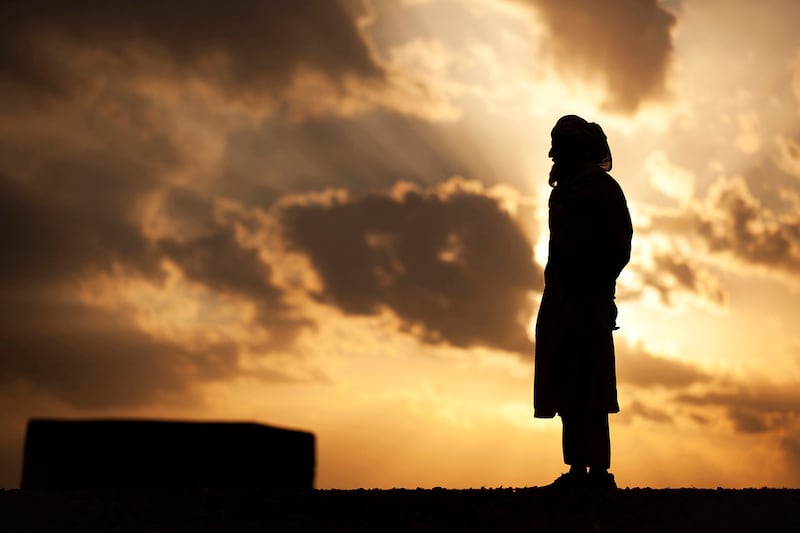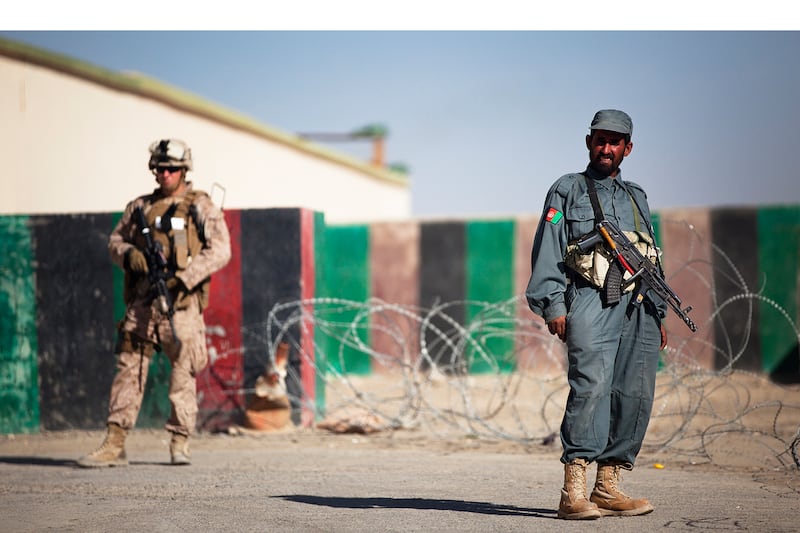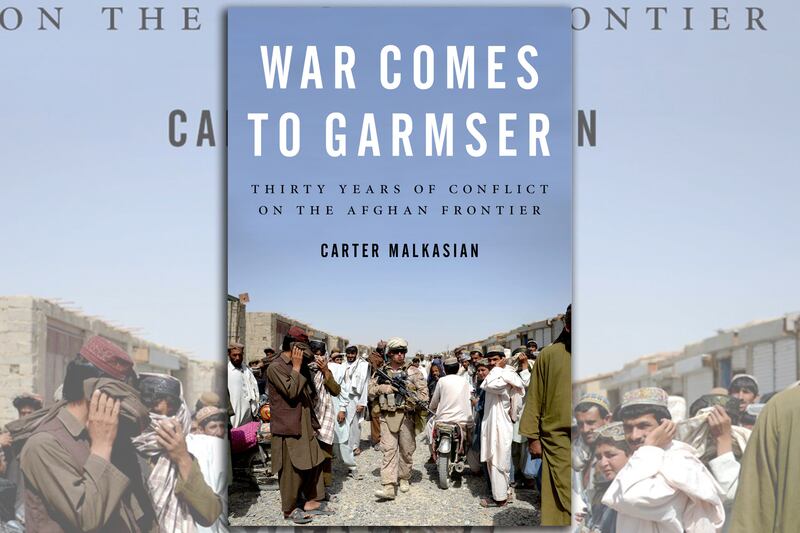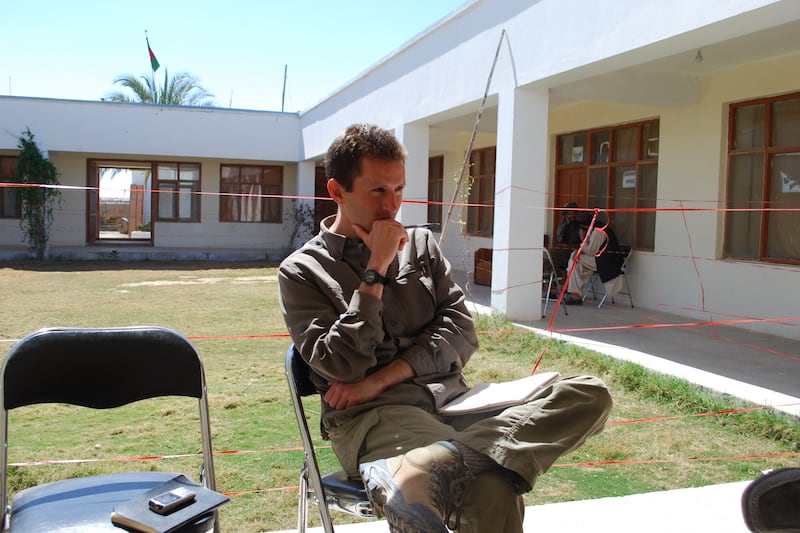
Carter Malkasian spent almost two years as a political officer with the State Department in southern Afghanistan’s Helmand province. He is considered one of the U.S. government’s top experts on Afghanistan and counterinsurgency. His new book, War Comes to Garmser: Thirty Years of Conflict on the Afghan Frontier, stands out for its in-depth analysis of one district, Garmser, located on the east bank of the Helmand River. Perhaps the rarest quality of his writing is the level of detail he provides into Afghans—their lives, stories, and sacrifices. Their perspective is an aspect of the current wave of war writing that’s been lacking, as has been the case with Iraqi voices. Many in the U.S. have indicted Afghans for being “corrupt” or “lazy” or “untrustworthy” and so on. Malkasian helps correct that superficial image.
I have known Malkasian for years, since we first met outside Fallujah, Iraq, in 2004. I spoke with him earlier this month in Washington, D.C., before he headed off to Kabul to work with Marine Gen. Joseph Dunford, the top commander in Afghanistan.

What’s your inspiration for the book?
I spent 18 months, in two separate deployments, in Al Anbar, Iraq. When I got back, I always meant to write a book, but never found the time. I wrote several short articles and a few research studies, but nothing more. It is one of my biggest regrets. The memories faded. The details went gray. When I got home from Afghanistan, I was determined to take the time to write something.
The book follows in the footsteps of Jeffrey Race's War Comes to Long An. Fluent in Vietnamese, Race told the story of a single province in Vietnam over a 20-year period. His work offered a window into the ground truth of the Vietnam War. War Comes to Long An has a bright red cover, printed by the University of California Press. If that doesn’t scream radicalism, I don’t know what does. That book—tattered and worn—has found its way into my backpack in far off places for the past six years. I hope that War Comes to Garmser can also give the broad view of a small place and maybe offer similar kinds of insights.

Why did you spend two years in Garmser, and how does this little district fit into the larger strategic picture?
War Comes to Garmser tells the story of the district of Garmser from the 1960s to 2012. Garmser has about 150,000 people, mostly living along the Helmand River in a fertile strip no more than 10 kilometers wide and seven kilometers long. It is tribal, Islamic, and hot—Garmser means "hot place" in Persian. Pakistan is just a five-hour drive across open desert. For over 30 years, Garmser has been part of larger conflicts that have engulfed Afghanistan as a whole: first, the jihad and the ensuing civil war, then the Taliban, and finally the British and American intervention.
Garmser is the front line of our war in Afghanistan. From 2006 to 2010, the district was almost entirely under Taliban control, the scene of some of the worst fighting in Afghanistan. It was here in 2006 that the Afghan government and the coalition suffered one of their most resounding defeats, as the Taliban launched their offensive that captured most of Helmand and Kandahar. After that, Great Britain and the United States put forth tremendous effort to reclaim Garmser, replete with professional governance programs, over $21 million in reconstruction projects, and over 1,000 new Afghan soldiers and police. Garmser was one of the targets of the surge. One thousand Marines were sent there. The last chapters of the book talk about to what extent the surge succeeded and how things must now lie in the hands of the Afghans. For all these reasons, I think Garmser is a decent window into the war as a whole.
Tell us more about the Afghans. Unlike other books on this war, you place Afghans front and center. That's unique.
I have a hard time not admiring the Afghans. They face challenges unknown to Americans, even to our fighting forces. Afghans face years of war. They do not get to go back to a home in a peaceful country. They get no pension. Every year they face violence and death and have to do something to keep their families alive. In this environment, the resilience of the Afghans amazes me. So many are willing to put their lives on the line to bring some kind of peace to their country, losing family members and suffering wounds in the process.

One day, I was sitting at the long Pashtun wake for Abdul Hadi, a brave, intelligent, fallen policeman whose uncle had been fighting the Taliban for years. The uncle reassured me that the losses came with the territory: “If you work for the government for 20 years, you will lose family members.” I know what I am saying does not fit conventional wisdom, which tends to paint Afghans as recalcitrant, lazy, and hopelessly corrupt. But that is not the whole picture. What I remember are Afghans who wanted a better future. In spite of all the violence, they carried on, year after year, working to build some kind of order out of war. Their experience was not one of futility but of fortitude.
Describe the case the Taliban had made in Garmser before coalition forces’ arrival in 2006, and the strengths they had.
I remember speaking with Taliban mullahs: black beards, white turbans, Arabic inflection to their Pashto. Many were good men, trying to help their community. The Taliban controlled Garmser from 1994 to 2001 and then again from 2006 to 2008. During those times, they tried to bring fair Islamic justice to the people and give land to the poorer tribes. Their devotion to Islam especially enhanced their credibility. One former Taliban judge and well-educated Islamic scholar told me: “The people had many problems ... I believed the Taliban regime could bring them peace. The local villagers asked me to become a judge with the Taliban. I knew that the Taliban fighters could not do this work. So I asked [the Taliban district governor] if I could become a judge.” Above all, the Taliban brought order. The Taliban were organized and disciplined. Unlike the mujahedin or the government, they did not fight among themselves.
The people of Garmser today remember these things, but they also remember that today's government has brought schools and health care and just a little freedom for women. I do not think most Pashtuns want to see the Taliban return to power. Nor do I think most Pashtuns see the Taliban as hated enemies. I think that they would prefer peaceful reconciliation to years of war.

What about the Marines? As a civilian working with them every day, what were your impressions?
The Marines were the necessary condition for whatever success occurred in Garmser. Their patrolling, their bravery, their sacrifice gave the Afghans breathing room to take charge of their own affairs. Ahmed Shah, a veteran sergeant and former mujahedin who has fought the Taliban for 15 years, said: “The Marines are my brothers. They are good men. They fight like no one else ever before.” All my proceeds from the book will go to the Semper Fi Fund for wounded warriors, a charity that helps wounded Marines and their families. It is an easy thing to do but in no way pays my debt to the sergeants, lance corporals, and privates who watched my back on patrol after patrol in the fields and villages and bazaars of Garmser.
Civilians too have sacrificed and worked hard for Afghanistan. It was my time on PRTs [provincial reconstruction teams] and in Anbar that made me want to go to Garmser in the first place. The dedication of State Department diplomats such as Marlin Hardinger—on his fourth year in Lashkar Gah—is breathtaking. The work of many, sometimes Pashto speakers, toiling away for years in dangerous places such as Asadabad, Musa Qala, Sangin—and heartbreakingly in Qalat—has too often gone unnoticed in America. (Anne Smedinghoff, a U.S. diplomat, was killed in Qalat.)
What will happen over the next year as troops draw down? What's Garmser's future?
Last May, the Marines all but left. Since then the Afghans have held and are holding today. Knock on wood. Every day I nervously watch Garmser to see what will happen. Yet Pakistan is close. Garmser’s final reckoning still lies ahead, as does Afghanistan’s.





